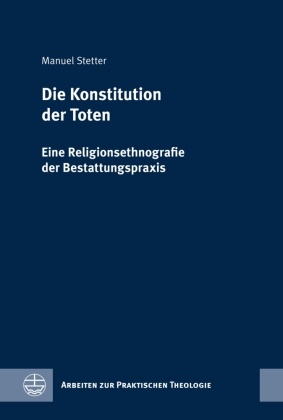
Die Konstitution der Toten - Eine Religionsethnografie der Bestattungspraxis
| Verlag | Evangelische Verlagsanstalt |
| Auflage | 2024 |
| Seiten | 324 |
| Format | 16,5 x 2,5 x 23,6 cm |
| Gewicht | 645 g |
| Reihe | Arbeiten zur Praktischen Theologie (APrTh) 96 |
| ISBN-10 | 337407569X |
| ISBN-13 | 9783374075690 |
| Bestell-Nr | 37407569A |
Die protestantische Tradition akzentuiert die Bestattung als Handeln an den Lebenden. Die Untersuchungen dieses Bandes stellen demgegenüber die Verstorbenen in den Fokus und fragen, wie mit ihnen im Rahmen der Bestattung umgegangen wird, was in diesem Umgang aus ihnen gemacht wird und welche Rolle der Religion zukommt. Die Bestattung wird dabei als Prozesszusammenhang vielfältiger praktischer entanglements aufgefasst, der die Rituale feierlicher Abschiednahme übersteigt. Neben kirchlichen und konfessionell ungebundenen Trauerfeiern werden die Praktiken der Abholung, der Leichenbesorgung in den Bestattungsunternehmen und der Aufbahrung untersucht und mit präfuneralen Umgangsformen im Hospiz wie postfuneralen Trauervollzügen kontextualisiert. Durch den ethnografischen Forschungszugang gelingt es der Studie, die komplexen und mehrdeutigen sozialen Konstitutionsprozesse der Verstorbenen herauszuarbeiten und insbesondere auch die Materialität des Sepulkralen in die Beobachtungen und An alysen eingehen zu lassen.
[Constructing the Dead. . A Religious n Ethnography of Funeral Religious Practice]
The Protestant tradition highlights the funeral as an acting towards the living. By contrast, the studies investigations in this volume focus on the deceased and explore ask how they are treated in the context of burial, what is made out of them in this treatment, and what role is thereby assigned to religion in this process. Funerals are conceived as a process of multiple manifold practical entanglements that exceeds the rituals of memorial ceremonial farewellsceremonies. In addition to ecclesial and nondenominational independent funeral ritualizationsservices, the investigations examine practices of collecting the dead, death taking care practicesof the dead in the funeral home, and viewing the body are examined, and they contextualized these practices with prefuneral practices in hospices situations as well as postfuneral mourning practices. Empl oying an ethnographic approach, it the study succeeds inis possible to reconstructing the complex and ambiguous social constructions constitutional processes of the deceased and especially in to allowing include the material dimensions of the sepulchral to enter the observations and analyses. funeral practices.
